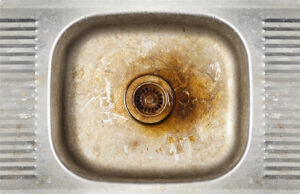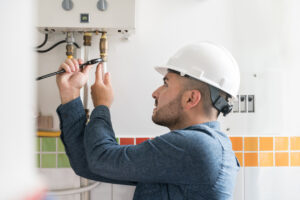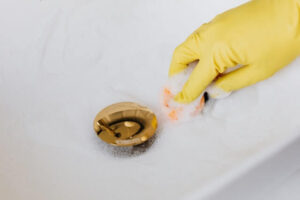How often should you have your sewer lines cleaned? When your sewer lines are clogged, they cause a lot of problems. From plugged toilets to clogged sink drains and less-than-pleasant sewer smells, it’s worth catching the issue early on. Luckily, you can prevent this problem by having your sewer pipes cleaned periodically. But how often should you have this done? Let’s find out! Home and Business Commercial and residential pipes require different levels of cleaning. Commercial lines should be cleaned every 18 to 22 months because they are used more often than residential ones, which should be cleaned every 3 to 5 years. Businesses that are high-risk due to their heavy drain usage should make sure their commercial sewer lines are clean, like restaurants and hotels. People with septic systems can go a long time before getting their septic systems cleaned out, but it’s still a good idea to have this done every few years. You should ensure to get this done at least every two years if you own a large house and have a big family, as you would create more sewage waste in the interim. Causes of Sewer Line Blockages Sewer lines that are clogged or backed … Continue reading How Often Should you Have Your Sewer Lines Cleaned?

What is Biofilm in Drain Pipes?
What is biofilm in drain pipes? You likely don’t think of your sink or bathtub drain as a home for living creatures, but drains, in fact, often attract bacteria and other microbes. Ever seen scum build up in a drain and clog it? That’s biofilm! Biofilm is made of layers and layers of micro-organisms that have been living undetected under your roof–that is, until the biofilm starts clogging the drains, which occurs when it mixes with debris like hair and soap. In this article, we’ll explore what causes biofilm to form, how it can affect your pipes, and how you can keep it from happening in your home or business. What is Biofilm in Drain Pipes? Biofilms are groups of microorganisms that form colonies on surfaces, resulting in a thin, slimy film. You might have encountered biofilm while clearing a hairball from your shower drain. Biofilm can also form on your faucet or the inside of your sink drain pipes. Some examples of organisms that produce biofilm include but are not limited to: Bacteria Fungus Algae Protists What Causes Biofilm? Now that we know what biofilm is, let’s take a look at what causes it to form. Biofilm is formed … Continue reading What is Biofilm in Drain Pipes?

How to Maintain a Water Heater?
If you are one of the many people who needs to maintain your water heater, you may have some enlightening questions to ask yourself, such as “how to maintain a water heater?” If so, you aren’t alone! There are many parts to a water heater that requires maintenance, so if you are not sure how to keep your water heater running and what steps to take, this article can help. What is a Water Heater? A water heater is a device that provides hot water on demand. It is used in homes and businesses to heat water for cooking, bathing, and other needs. Heaters come in different sizes and shapes and can be used with gas, electricity, or oil. Water heaters are usually located in the basement or attic of a home. Depending on your home’s energy source, you may need to purchase a specific type of water heater. There are two types of water heaters: electric and gas. Electric water heaters use electricity to heat the water, and gas water heaters use natural gas or propane to heat the water. Tips and Tricks on How to Maintain a Water Heater You can do a few things to keep your … Continue reading How to Maintain a Water Heater?

Low Water Pressure? 5 Reasons Why This Is The Case
Do you have low water pressure? Mornings can be difficult when trying to rinse your hair under a showerhead that barely produces a trickle. Low water pressure can be caused by various factors, some of which are exclusive to the room and others that affect the entire house. Unfortunately, you may not know how much you rely on water to complete various jobs until you have a water supply problem. In the worst-case scenario, you may be without water for an extended period. This blog post dives into what is happening when your pressure suddenly drops, why this happens, and how to fix small problems like this. The 5 Most Common Causes of Water Pressure Problems If you live in an area where the water pressure is low, it can be difficult to shower, wash your dishes, and use the bathroom. Decrease in pressure is also a common problem in homes built before the 1960s. Here are the five most common causes of decrease in pressure: Failing Pressure Regulator Pressure regulators keep the water flow from becoming too extreme. If the pressure in your entire house suddenly lowers, it could signify a malfunctioning pressure regulator. Leaks Leaking pipes … Continue reading Low Water Pressure? 5 Reasons Why This Is The Case

Why Regular Drain Cleaning Services Are Critical
Why regular drain cleaning services are critical? Here’s why you should schedule yours. Clogged drains are no laughing matter – they pose serious health risks to everyone living in the home. Dirty water slowly starts to accumulate without proper upkeep, and there is no way of telling when this murky mess will cause problems. As this dirty water spreads throughout the home, toxic mold and mildew grow out of control – creating additional problems that range from allergies to fatal illnesses. The situation gets worse when these pesky critters take refuge in stagnant puddles where they find a comfortable place to lay eggs; leaving you vulnerable to dangerous bugs like fleas, cockroaches, and rats! A septic system can be a severe cause of a slow or halted drain. If the septic system is not maintained for an extended time, sewage may overflow the drain pipes and into the house. If sewage has overflowed into the leach field of a septic system, the lines there may need to be replaced at great expense. Masses of small tree roots invading the main subsurface drain are another source of clogged drains. Plumbers can get rid of them and offer advice on keeping … Continue reading Why Regular Drain Cleaning Services Are Critical

